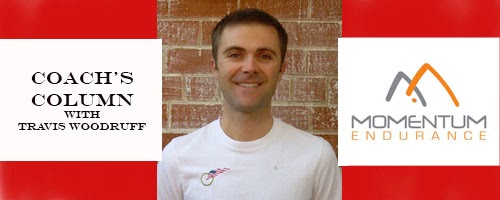Question: I live in a very flat area and often get killed on climbs in racing. How do I get better at climbing without having to drive really far to train on hills?
Answer: Like any cycling skill, improvement comes with specific training so it is helpful to understand what it takes to climb faster. Let’s consider what will help you get you up the hills faster so you won’t be getting dropped in your next race.
Power to Weight Ratio
This is the single most important metric summarizing your ability to climb. Improving your sustainable power and/or decreasing your body weight will have you better prepared for the fight against gravity. Producing more power over the long haul and/or having less mass to carry with you will directly equate to faster climbing. It is entirely possible to improve your fitness and decrease your body weight even if you’re only riding the flatlands. As along as you’re training and building fitness, your climbing will improve.
How the Effort is Produced
When climbing, your intensity (power) is often achieved with a lower cadence when compared to a similar intensity on the flats. Most riders will self-select a lower cadence when climbing and sometimes you’ll be forced to go with a lower cadence if you’re out of smaller gears. Riding with a lower cadence requires that you apply a higher force to the pedals with each revolution. While it’s natural to spin a higher cadence along the flats, you will want to include some riding with a lower cadence to replicate the pedaling force that climbs require. It can be especially helpful to do some of your harder, steady efforts with a lower cadence to mimic the demands of climbing. Equally intense efforts can be done with a high pedaling force and lower cadence or with a lesser pedaling force and a higher cadence. Both can build fitness, just be sure to include some of the former to improve your climbing.
Make a Trip
If you’re training for a race with some major climbing and you’ve never ridden such big climbs, it would be wise to do a training camp early in the season. If you can visit the same venue where you’ll be racing that’s great, but anything similar can do the trick. Testing yourself on the big climbs is an experience that cannot be over-valued. The better you know what you’re up against, the better you can prepare for it.
The recipe for faster climbing isn’t a complicated one, but it will require some focused training. Have fun with the rides and best of luck as you prepare for the 2015 season!
Travis Woodruff is a USAC Level I (elite) certified coach who holds a B.S. in Kinesiology with emphasis in Exercise Science. He’s coached riders to five MTB National Championship wins and has over 15 years of personal racing experience. Since 2005 he’s competed as a pro mountain biker and has coached full-time. His business, Momentum Endurance LLC, is based out of Prescott, Arizona.









